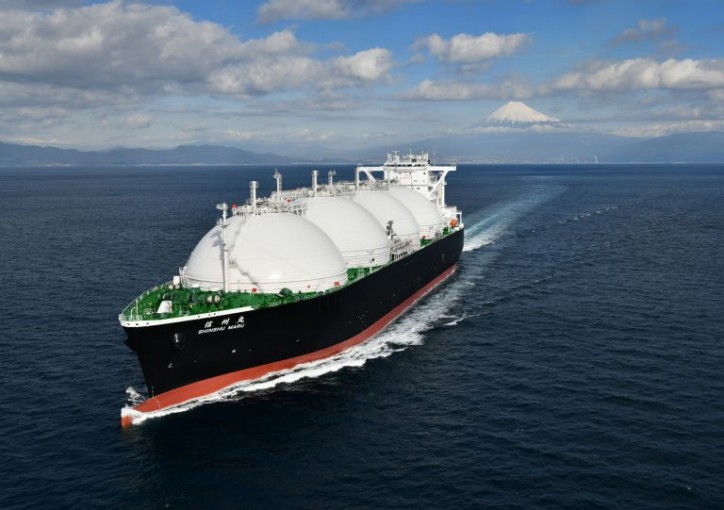Kawasaki Heavy Industries, Ltd. today delivered the SHINSHU MARU (Kawasaki hull no. 1734), a 177,000 m3 capacity liquefied natural gas (LNG) transport vessel for use by Trans Pacific Shipping 7 Limited, joint venture between JERA Co., Inc. and Nippon Yusen Kabushiki Kaisha (NYK Line).

The second of Kawasaki's line of 177,000 m3 capacity LNG carriers to be commissioned, this ship is designed to enable passage through the newly expanded Panama Canal, which opened for full operations in 2016.
The SHINSHU MARU will be used by JERA to transport LNG procured via the Freeport LNG Project in the U.S. The vessel features standard LNG carrier hull dimensions in order to enable docking at major LNG terminals around the world while offering larger cargo tanks for increased transport capacity, thus cutting LNG transport costs and facilitating more flexible LNG trade operations by shipowners.
Kawasaki has optimized the hull structure to decrease overall ship weight, enhanced the hull-shape design, and adopted a two-motor, twin-screw propulsion system to achieve the best propulsive performance possible, while also integrating a DFD electric propulsion system* which increases fuel efficiency at all speeds.
Moving forward, Kawasaki will continue to pursue shipbuilding operations in light of the anticipated rise in demand for LNG and other clean-energy fuels.
Delivery, principal particulars, and features of the vessel are as described below.
Principal Particulars
| Length overall | 299.90 m |
| Length between perpendiculars | 286.00 m |
| Molded breadth | 48.90 m |
| Molded depth | 27.00 m |
| Molded draft | 11.80 m |
| Gross tonnage | 135,951 |
| Deadweight | 82,287 t |
| Tank cargo capacity | 177,277 m3 (at -163°C, 100% capacity) |
| Main propulsion system | 2 propulsion motors, 2 reduction gears |
| Speed | Approx. 19.5 kn |
| Complement | 38 people |
| Classification | Nippon Kaiji Kyokai (ClassNK) |
| Country of registration | Bahamas |
Features
- This large-scale LNG carrier is equipped with four independent Moss LNG tanks for a total cargo capacity of 177,277 m3. By increasing the LNG tank diameter to the maximum installable limit and utilizing stretched tanks, Kawasaki has successfully expanded the maximum LNG carrying capacities of carriers designed to pass through the newly expanded Panama Canal.
- The SHINSHU MARU uses a DFD* electric propulsion system, which enables greater fuel efficiency than the existing steam turbine plant design. Moreover, the inclusion of a two-motor, twin-screw propulsion system enables high propulsive performance at a wide range of speeds.
- The thermal insulation system of the LNG tanks adopts the proprietary Kawasaki Panel System developed in-house, which offers outstanding heat insulation performance for an LNG boil-off rate of no more than approximately 0.08% per day.
- The cargo tank section is protected by a double-hull and double-bottom design, so even if the carrier's hull were to sustain damage the LNG tanks within would remain safe and undamaged.
- The bridge is designed with state-of-the-art electronic navigation equipment concentrated in one location for greater ease of operation as well as panoramic windows offering a 360-degree view to the outside.
* The dual fuel diesel (DFD) engine is capable of burning both oil and gas, whereas a conventional generator engine can only burn oil for fuel. The propulsion system comprises multiple generator diesel engines and variable-speed propulsion motors. Either gas or oil is supplied to the engines to generate electricity, which drives the propulsion motors that power the propeller.
Source: Kawasaki